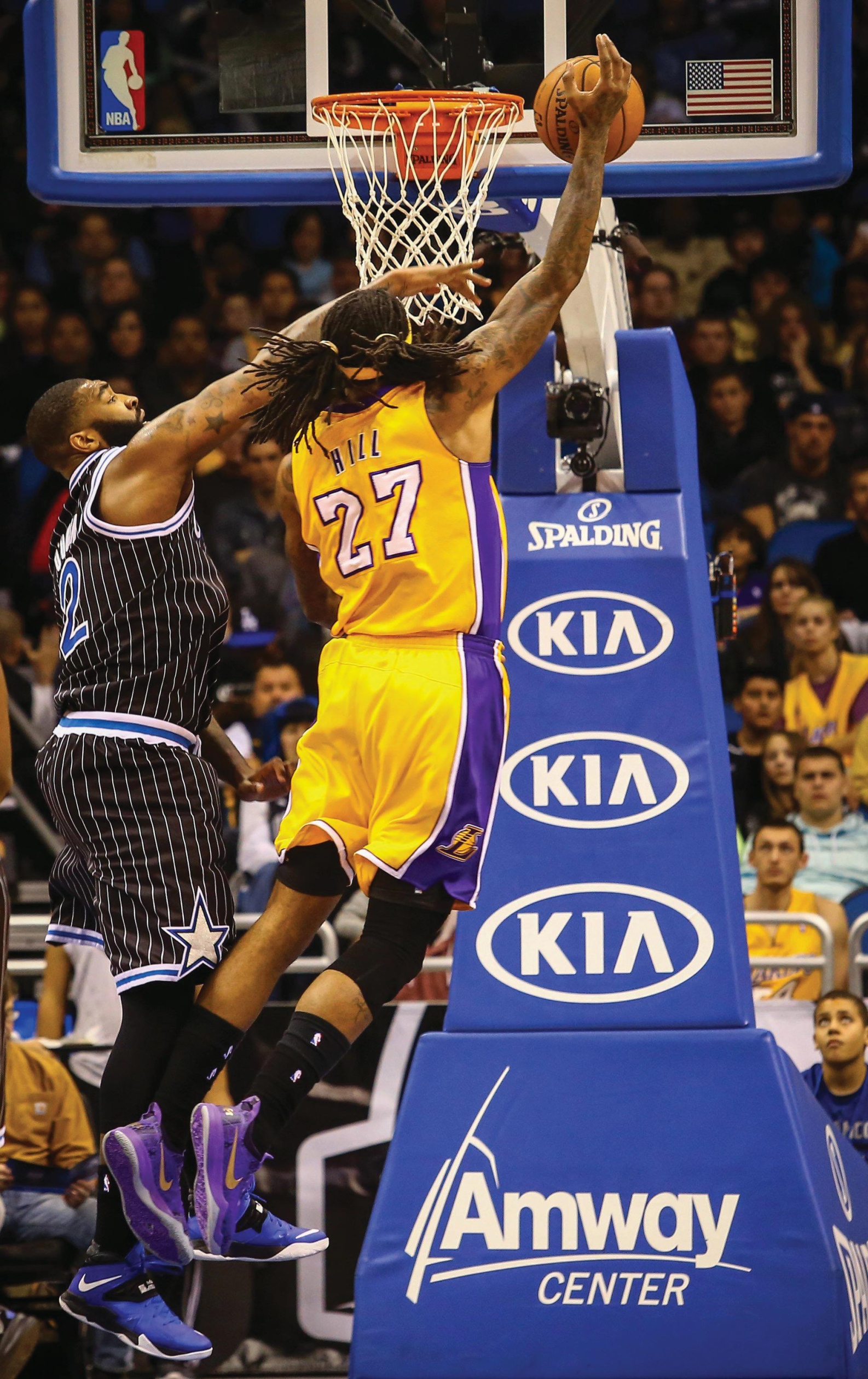Advertising taking over professional sports?
This weekend, thousands of NBA fans will pass between two 20-foot-tall Smoothie King cups flanking the entrance of the formerly named New Orleans Arena. Once inside, they’ll watch some of the NBA’s best athletes perform in front of a backdrop of Smoothie King ads in this year’s All-Star Weekend, which runs Feb. 13-16. Smoothie King logos will appear on the building’s exterior, they will blanket the court and they’ll even show up on the scoreboard.
All this because last Thursday, the New Orleans Pelicans announced a 10-year deal to rename their home arena the Smoothie King Center. The deal, part of team owner Tom Benson’s continued effort to re-brand the franchise, is just the latest example of major advertising in a league desperate for new sources of revenue.
Just this past season, the NBA approved the sale of on-court advertisements in front of team benches and on the tops of backboards. These ads, though highly noticeable, are minor compared to the NBA’s larger aim: to tap into potentially hundreds of millions of dollars by selling ad space on jerseys.
The plan to sell advertising patches on NBA jerseys has been discussed since 2009, when the Phoenix Mercury of the WNBA signed a six-figure deal with identity theft prevention company Lifelock allowing the company to plaster its logo across the front of Phoenix’s jerseys, directly above the numbers. In the past four years, half of the WNBA has followed suit.
The WNBA, NASCAR and European soccer leagues are the only primary athletic organizations that currently display ads on uniforms. The NBA nearly joined that short list after approving jersey ad space for the current 2013-2014 season. However, the idea has been delayed due to disagreements concerning how the spoils will be shared.
Adam Silver, who replaced David Stern as NBA commissioner last Saturday, estimated last year that jersey ad space was worth $100 million per year. However, while some owners simply view this as an untapped gold mine of revenue, small-market owners are concerned the value of the sponsorships will be greater in large markets, driving an even deeper wedge between big-market teams such as L.A. and New York, and teams that already suffer from major financial disadvantages such as Milwaukee and Charlotte.
The NBA’s designs to incorporate advertisements into team uniforms isn’t necessarily the beginning of a trend that would span all four of the nation’s major sports. MLB commissioner Bud Selig told an ESPN radio show that baseball wouldn’t follow suit even if the NBA moved forward with its jersey patches.
NFL commissioner Roger Goodell told The Detroit Free Press back in August 2012 that professional football was not actively considering the idea. Even the NHL has been silent on the issue, despite bringing in the least amount of revenue of the big four national sports leagues. Of course, if the NBA starts raking in millions of dollars, each of these leagues may rethink the possibility.
Ads aren’t the only thing the league wants to change about team uniforms. Despite the sleeved jerseys worn by ten teams on Christmas day 2013 receiving mixed reviews – including comments from LeBron James indicating his teammates were upset about the uniforms – the league seems determined to make them a trend.
James was by no means the only high-profile name to dislike the uniforms – outspoken Dallas Mavericks owner Mark Cuban told ESPN Dallas he “Hated them … I just thought it made our guys look like a high school wrestling team.”
The sleeved uniforms might be the latest NBA business decision fans will just have to get used to. In addition to players wearing the sleeved jerseys throughout All-Star weekend, Chris Haynes of CSSNNW.com reports that beginning next season, all “heritage jerseys,” such as Portland’s Rip City uniforms and Detroit’s Motor City alternates, will be sold to fans exclusively in sleeved form.
– Logantjones@aggiemail.usu.edu
Twitter: @Logantj

